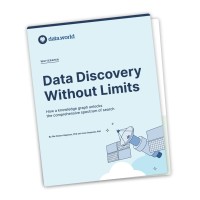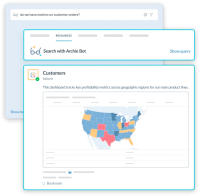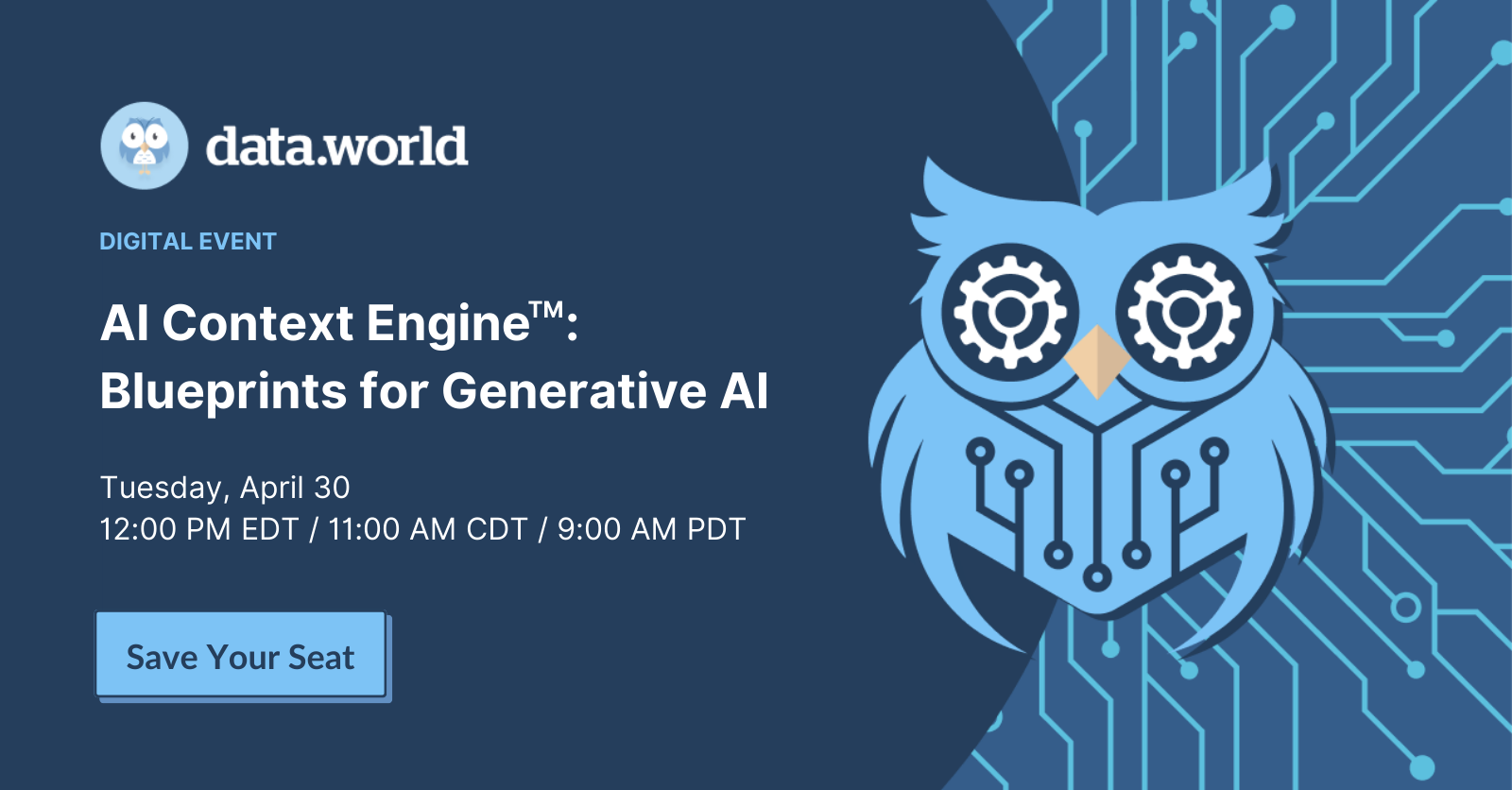Microsoft Purview is a multi-cloud solution for metadata management. It provides a unified approach to managing data across multiple systems, platforms, and environments. With the ever-growing volume and complexity of data, Purview provides a comprehensive solution to understand and protect data wherever it resides.
Purview classifies data whether it's located on-premises, in Microsoft cloud services like Azure and Microsoft 365, or in other cloud environments. Organizations can apply the corresponding controls post-classification. Purview also offers tools to manage data policies and regulatory requirements. Relatedly, Purview helps identify and mitigate risks associated with data, like unauthorized access or non-compliance with data protection regulations.
But Purview isn’t the silver bullet solution for all organizations and sectors. If you’re looking for other options, you’ll want to make sure you choose the right alternative to Purview.
Essentially, users feel that Microsoft Purview is a strong product for users focused particularly on data governance and security. One strong use case for choosing Purview is the single-pane-of-glass management of digital data that resides in scattered environments. However, Purview is not seen as the market leader in terms of ease of implementation, and users noted limitations in terms of connectivity and user experience.
Top Microsoft Azure Purview Data Catalog Alternatives:
data.world
Collibra
Atlan
Alation
Egnyte
Drawbacks of Purview as a Data Catalog Solution
There’s plenty of positive user feedback on Purview’s various features, but customers have also shared recurring difficulties with using the platform. Some of the most common difficulties are:
Difficult to use
Purview has a complex user interface which makes it difficult to find the desired functions
Frequent updates mean that users often find it difficult to locate their most-used functionalities
Data access is not controlled from Purview and security measures are from data sources only
Limited customization
Current features on offer can be rigid at times; some users would prefer more customization options
Customization is also dependent on whether users have other products in the Microsoft ecosystem
Doesn’t integrate with other data sources than Azure, which ultimately limits efficiency outside the Microsoft or Windows environment
Difficulty with processing large datasets
Variable expenses
Ultimately, Purview is intended to be used with Azure, so it likely wouldn’t be as useful if you use other services.
Alternative Solutions to Purview for Data Catalogs
As you compare data catalogs and data governance solutions, you’ll want to know what other options are available in the market. If not Purview, what other tools are users considering to manage their data assets? Here are some Purview alternatives.
data.world
data.world is a cloud-centric platform designed for data collaboration and governance, offering scalable solutions for cataloging and managing enterprise data. As a popular alternative to Microsoft Purview, this platform provides a seamless way for users to share and collaborate on data through a unified view of available data resources and insights.
With an emphasis on data governance, data.world helps with risk management and ensures compliance with data-related regulatory standards. Organizations leverage data.world to accelerate their path to discovery, using features ranging from Business Intelligence dashboards to conversations with generative AI.
Microsoft Purview primarily focuses on data governance within the Microsoft ecosystem. data.world—a cloud platform—provides a more multi-platform approach and allows businesses to integrate data from diversified sources. See what user reviews are saying about data.world.
Unlike Purview, a traditional data catalog, data.world is backed by a knowledge graph architecture, which makes it the most advanced data catalog in the current industry. Traditional data catalogs have rigid structures and predefined schemas that restrict their ability to effectively represent and integrate complex relationships and data sources. They typically rely on structured queries or simple searches that limit the data discovery capabilities.
In comparison, knowledge graph-based data catalogs like data.world leverages a flexible graph structure to model data assets, their relationships, and associated metadata as interconnected nodes and edges. They are primed for AI due to this flexible architecture.
That’s why ultimately, data.world provides more accurate and contextual recommendations for relevant data assets via the graph structure and semantic relationships. data.world ensures that enterprise AI is being used to its full potential. It transforms traditional "data breadlines" into real-time answers.
Organizations looking to integrate AI into their business models prefer data.world over other data catalogs on the market. Book a data.world demo to better understand data.world’s features.
data.world pros & cons
data.world pros
Search algorithms enhanced by AI and automatic data enrichment through an intuitive interface
Automation of metadata management and control over workflow processes
A cloud-based platform designed for scalability and ongoing innovation
A knowledge graph framework that incorporates new AI functionalities and improves model accuracy
data.world cons
Top features of data.world
Here are some of the most popular and widely-used features of the data.world platform:
Knowledge graph architecture
data.world’s knowledge graph architecture sets it apart from the rest of Purview's competitors. A knowledge graph foundation provides a more accurate way to organize data across various sources. It helps map relationships between data sets, terms, and concepts.
Built-in LLM to query datasets in natural language
data.world has built-in LLM that allow users to query datasets in natural language. Users not well-versed in SQL or other query languages can make queries in plain language. Then, the system will retrieve the relevant data without manual effort.
Ease of use
data.world provides a seamless consumer-grade user experience by reducing the learning curve and making data management easier for users. It highly emphasizes user-friendliness so more team members can engage actively in data-driven decision-making.
Equally useful for data consumers and producers
data.world is equally useful for both consumers and producers because it:
Enables natural language search across the entire platform, so users can find data resources using plain language rather than complex database queries
Provides a user-friendly interface that allows users to query and analyze data without requiring knowledge of SQL or other query languages
Automates common data governance tasks, such as data classification, data quality checks, and access control, to ensure data integrity and compliance
Integrates with business intelligence (BI) tools and provides real-time visibility into the quality and health of the underlying data sources that users can monitor directly from their BI dashboards
One data.world user noted on G2:
“data.world gives a quality sensitive information inventory to look at and reveal. Their cloud-local stage Saas was exceptionally useful in information examination and administration, information operations and formation of any information related diagrams.”
Reliable governance and data stewardship
data.world supports agile data governance. Its automation-driven workflows and powerful lineage features give data stewards a complete overview of their data ecosystem, providing better control. The agile data governance functionality gives teams the power to do the following:
Create an inclusive environment where stakeholders can collaborate share insights, and maintain data quality
Provide highly configurable automation and automation-driven workflows that remove friction from data governance programs
Apply global governance policies and implement internal rules with domain-centric curation and highly configurable workflows
Accelerate the delivery of well-governed analytics and curate reusable data products
Create a single source of truth for business users, where they can find well-governed data products
No matter which data catalog you choose, it’s important to choose one that can serve as a springboard for your organization’s AI initiatives. Read our full body of research on how to use a data catalog to build a foundation for scalable AI.
Collibra
Collibra primarily emphasizes data governance, data quality, and data privacy. The essence of its service revolves around data governance. The platform provides a suite of tools aimed at setting up and applying data policies, standards, and procedures, assisting organizations in adhering to both their own guidelines and external legal requirements. Additionally, it promotes the creation of a uniform data vocabulary throughout the organization, standardizing the understanding and application of data. Collibra further offers a data catalog, which allows users to explore and comprehend the data assets available within the organization. See what Collibra users think about the platform.
Collibra pros and Cons
Pros
Comprehensive functionality covering a broad range of data governance needs.
Strong back-end cataloging features and governance processes.
Easy customization to fit specific organizational requirements.
Cons
User interface is not friendly enough to use and understand for new customers.
The search function is weak and frustrating.
Relationship management and responsiveness to product enhancement requests need more improvement.
Top Features of Collibra
For certain aspects of the data catalog, Collibra outshines Purview. Here are some of those most-used, robust features of Collibra, according to several reviews and other research.
Data governance: Users can establish a central hub for data definitions with a comprehensive business glossary
An intelligent data catalog: Gives a rich understanding of your data with connections between business, technical, and privacy metadata; users leverage robust quality checks and column-level lineage
Proactive data observability: Users can monitor data quality and pipeline reliability across over 40 databases and file systems, and integrate industry-specific validation rules to catch inconsistencies
Data lineage: Map data flows from source to destination with end-to-end lineage.
Data security: Leverages metadata and business context to determine access permissions. You can implement data access policies and use its advanced algorithms for sensitive data classification to achieve better security.
Atlan
Atlan is the active metadata platform for the modern data stack. It was “built by data teams, for data teams.” Atlan integrates metadata from diverse sources, including Snowflake, dbt, Databricks, Looker, Tableau, Postgres, among others, to offer a cohesive experience in data discovery, cataloging, lineage, and governance across a team's data assets. These assets span columns, queries, metrics, dashboards, and beyond. Atlan enables a bidirectional flow of metadata, enhancing the tools and workflows daily employed by data teams with valuable context. For instance, a team could infuse a Business Intelligence tool with context to elucidate the significance of a dashboard metric. See what Atlan users think about the platform.
Atlan Pros & Cons
Pros
Easily connects with various data tools
Simplifies business term definitions and improves collaboration
Highly valued for integrating metadata discovery within preferred tools
Focuses efforts on the right tasks for effective use
Makes data discovery efficient and engaging
Cons
Rapid development sometimes leads to outdated documentation
Disturb users due to slow information loading for data assets
Managing multiple roles can be confusing for users with access to various levels
Does not extend to calculation levels in certain tools like Looker without manual definition
Top Features of Atlan
Here are some of the most-used and popular features of Atlan, according to users and other research:
Modern user interface (UI): A user-friendly interface that makes it easy for new users to use and understand the platform quickly
Chrome extension for metadata discovery: Allows users to discover metadata within their preferred tools without switching contexts
Detailed lineage tracking: Provides extensive lineage tracking so users can see the journey of their data across different platforms
Multiple supported integrations: Versatile and adaptable to different technological ecosystems, supporting multiple integrations with popular data tools and platforms like Snowflake, Databricks, and Looker
Data usage and analytics: Generates insights on data lake and warehouse usage analytics to provide better visibility into key metrics like usage patterns and table activities
Alation
Alation is another data intelligence platform that helps organizations achieve better data governance, data discovery, and data lineage. A primary factor driving businesses toward Alation is its accessible interface. This ease of use allows individuals across various technical backgrounds to interact with the platform effectively and gain valuable insights from their data. Alation's strategy of making data more accessible aligns with organizations that are aiming to implement a data-driven culture. It strives to achieve an equilibrium of user-friendliness and governance, which is highly sought after by end-users in a data catalog solution.
When assessing the two solutions, some users found Purview easier to use and set up, but Alation is easier to administer. Reviewers also preferred doing business with Alation in general. Users also felt that Microsoft Purview meets the needs of their business better than Alation. For feature updates and roadmaps, those same reviewers preferred the direction of Alation over Microsoft Purview. See what Alation users think about the platform.
Alation Pros & Cons
Pros
Quickly implement ML solutions and simple integration with platforms like Databricks.
Add policies and terms to the catalog to help data stewards and SMEs manage metadata.
Lineage graph is highly valued for routine organizational discussions, with ongoing exploration of the API and Health API for extended functionalities.
Insightful interface and customization make it easy to connect data sources and engage users.
Cons
Request extra charges for enabling column-level data lineage, despite its importance for impact analysis.
High pricing for data stewards as compared to other tools.
Some desired features are still under development.
Top Features of Alation
Here are some primary and often-used features of Alation that were pointed out by users and reviewers:
Data governance controls: Users can manage who has access to specific data and analytics tools
ML-backed data catalog: Incorporate metadata-enriched datasets, notebooks, and vector databases that further streamline the entire ML workflow
Cloud data migration: Users can analyze data usage patterns and policies
Column profiling and impact analysis: Teams can identify impacted data assets and stakeholders to promote transparency and accountability through health metrics and trust flags
Metadata management: Surface insightful details like popularity, search relevancy, and usage recommendations to provide actionable, intelligence-based insights
Egnyte
Egnyte is a cloud-based platform for managing, collaborating on, and governing data. It’s a centralized hub where businesses can store and access critical data while maintaining strong security. Egnyte also clearly visualizes how data flows throughout your organization. This transparency ensures data quality by identifying potential risks and streamlining regulatory compliance efforts.
When comparing Purview and Egnyte, some users found that Egnyte is easier to use, set up, and administer. They also found that Egnyte meets the needs of their business better, including product support and the direction of the product roadmap. However, reviewers preferred doing business with Purview overall. See what Egnyte’s users are saying about the platform.
Egnyte Pros & Cons
Pros
Immediate and effective support for troubleshooting
User-friendly interface and simple setup process
Focuses on security, including password-protected file sharing
Performance speed and reliability support efficient workflows, particularly for architecture firms
Cons
Users want an automated notification for expiring shared links to better manage access
Limitations on file size are a constraint for users who want to manage very large files
Switching between browsers and desktop interfaces for certain actions is inconvenient
Ideally Egnyte would expand integration capabilities with more third-party applications for better functionality
Top Features of Egnyte
Here are some of the best features of Egnyte that make it a good alternative to Purview:
Unified content management: Provides a centralized hub for managing all the assets so they’re accessible anywhere from any device
Customizable branding and user management: The platform is tailored to support multiple-user access so everyone can access sensitive data appropriately
Data authentication and offline access: The platform maintains data integrity by locking files so users can continue their work without an internet connection
Content intelligence platform: Classify data and identify content types by scanning files for unusual behavior or ransomware threats—saving time from manual auditing
Real-time synchronization: Synchronizes file changes in real-time, keeping all data updated and complying with data regulations
Book a Demo With data.world Today
Data.world is the only data catalog built on Knowledge Graph architecture, allowing users to review all objects (metadata, tables, documents, etc.) as objects on a graph that have some relationship to each other.
To learn more about why data teams prefer data.world, get a demo today.



